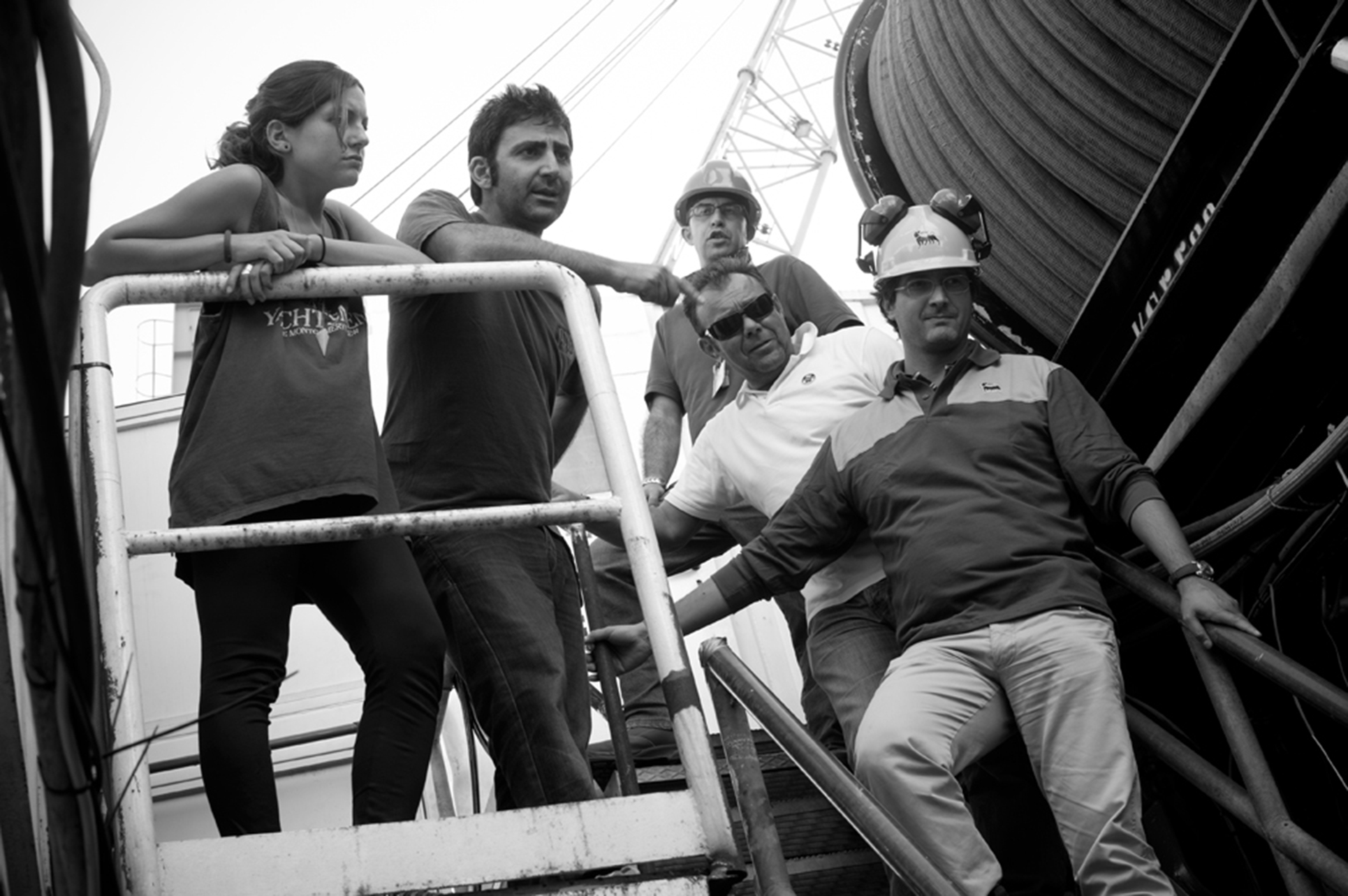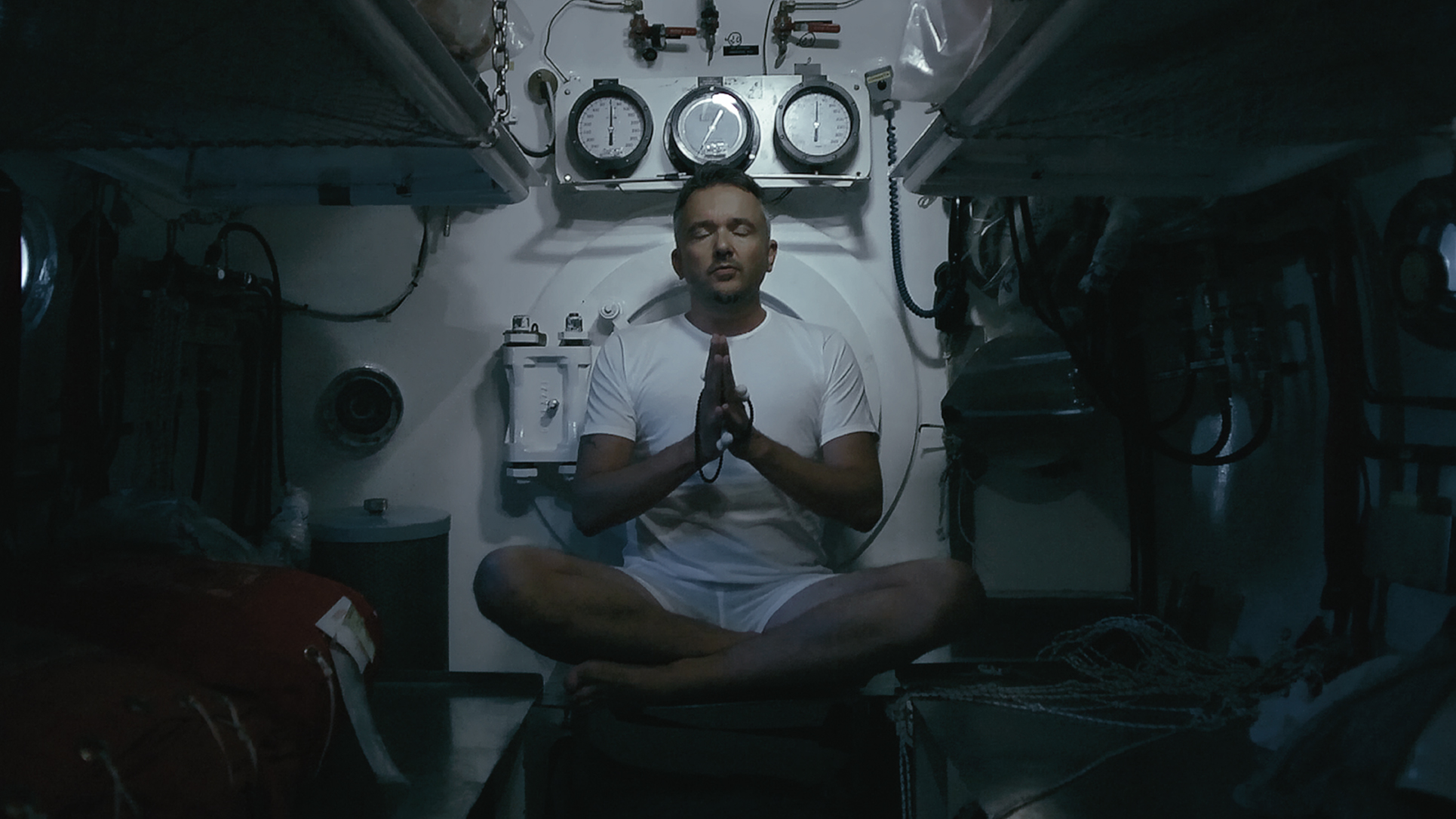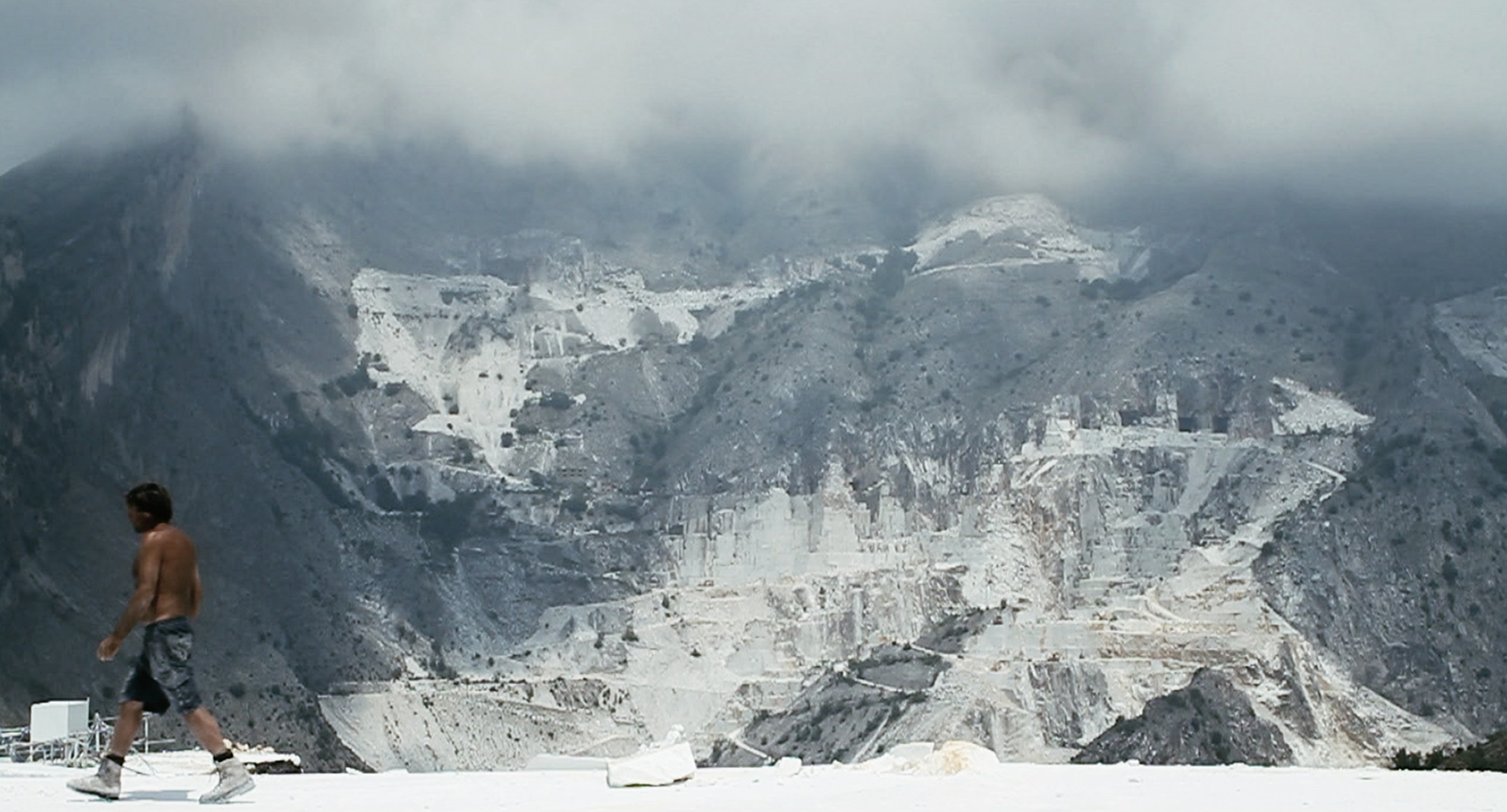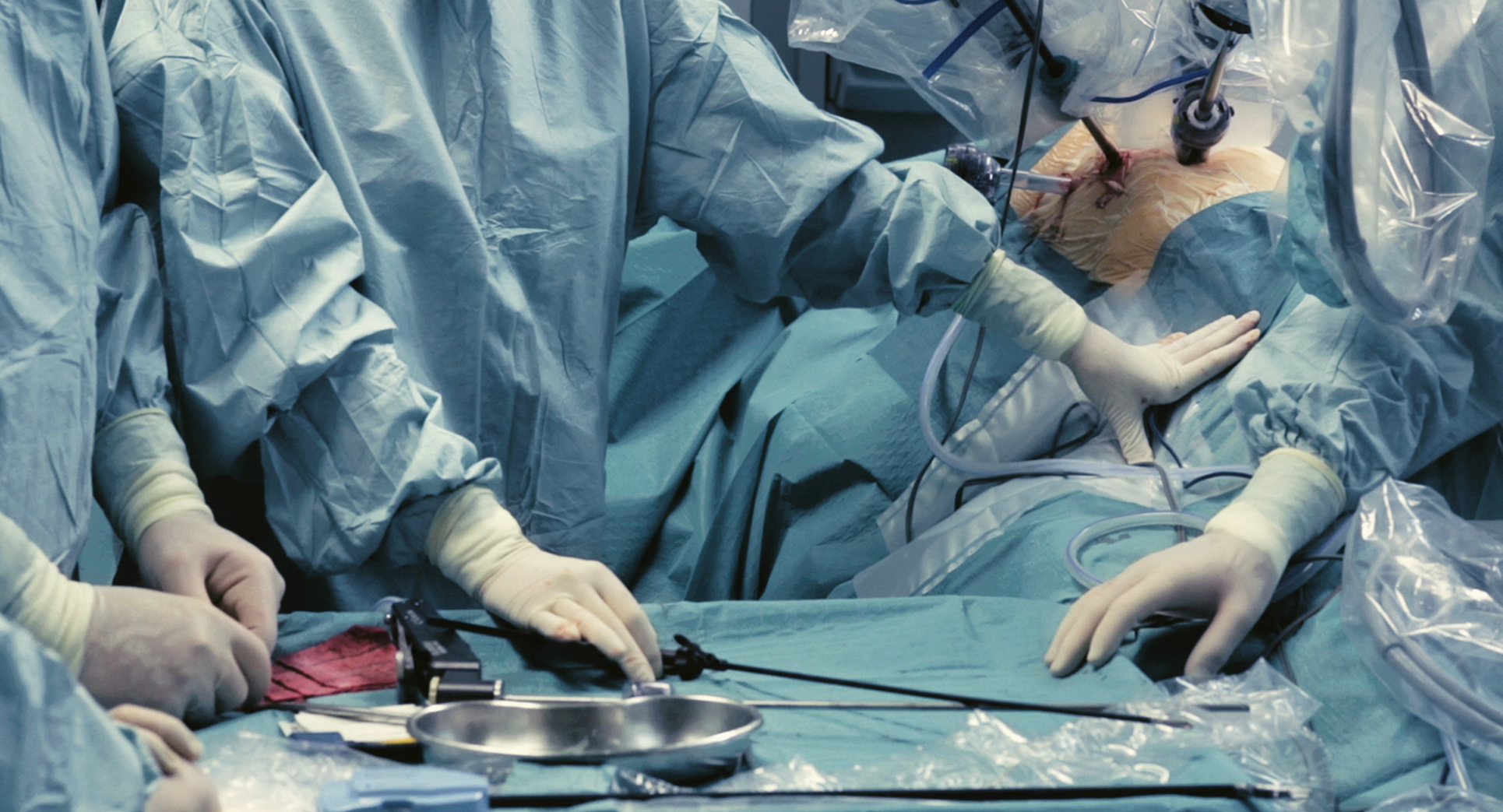Full Immersion in the Fantastic World of Reality
The short films by artist Yuri Ancarani, born in Ravenna in 1972, reveal unfamiliar worlds and surprise the viewer with well thought out and clean images, accompanied by almost inaudible, but nevertheless effective sound effects. His camera regards the world with a child-like curiosity and innocence – it accompanies him in search of unknown places, and astonishes the viewer with documentary images from the real world which are equal to the imaginary world of video games or the best science fiction. The artist, who has received important awards and prizes, has always operated in the border zone between contemporary art and cinema, working in both documentary cinema and feature film. During our conversation he speaks about his origins, experience, motivation, partners of collaboration and survival strategies.
Barbara Fässler: You started making films by studying your local area in Ravenna, later turning to more distant lands and other themes. You’ve said that you seek a universal meaning in the local dimension. Where do you position yourself on the scale between autobiography and communication with the surrounding world?
Yuri Ancarani: That is a very difficult question, because everything happened as if by chance. The necessity to communicate things arose when I moved to Milan as a student, and at that time I rarely got to visit my native town Ravenna – a place I thought I knew very well. Milan seemed to me a sterile city, like a huge shop window display of Italy, an international city the same as Rome. It felt distant to me, distant from the places I knew, and when I returned to Ravenna, I began to describe the changes I noticed. Obviously I illustrated these changes with my thoughts, therefore there is something autobiographical in my work, but underlying this is also an analysis of topical issues. There is a sentimental component in every work, and this is always autobiographical, but what I show you is part of everyday life, a reality that I know well.
B.F.: On the one hand, there is your personal viewpoint, but, on the other hand, there is present in your works also an analytical approach which emerged out of the detachment from when you left your native town. Often in your films we see elements of alienation, the unfamiliar. A red thread, as you say, leads us from the visible to the invisible. Each video points the spotlight on another reality which is inaccessible to mere mortals. Ricordo per moderni tells a story about foreigners in a provincial context, Il Capo shows the complicated and dangerous work in a marble quarry, in Platform Moon we are plunged into a hyperbaric and claustrophobic chamber, but in Da Vinci we are offered a view inside a human body during surgery. What is your message? Are you a magician with didactic and fact-finding goals, or a poet who explores uncharted territories?
Y.A.: Firstly I try to satisfy my immense curiosity about everything that surrounds me. Thus the films are born quite randomly, even though later I consciously weave linking threads into them. When I encounter specific situations which attract me intensely, I push deeper and deeper into them, trying to reach the very end. I delve into unknown places so I have to rely on sensations and intuition. When finally, after months of research, feeling your way and knocking on doors, and trying to bypass the many “no” and achieving a “yes”, I manage to get something, it really becomes something huge! I am always afraid of being disappointed, but in the end by using a lot of material I become richer. Think of an operating theatre. The impression it left on me was like an explosion. Then some instinctive and childish thoughts leapt out: when I saw a robot that was moving, I didn’t know where I was any more. In the end I gathered it all together and made a movie which is completely based in reality. There is an operating room, there is a robot, but my take on it is fantasy-like and innocent – typical of someone who is seeing something for the first time. And I try to transmit this “first time” sensation to the viewer. A film is a kind of journey where each turning offers new information, leading us to a grand finale. You could say that it is a mix of what I have experienced and what the video camera records.
B.F.: And the camera transmits your experiences to the viewers.
Y.A.: Yes. I never forget the people who will be viewing the film when it is finished.
B.F.: Are you constantly in a dialogue with the viewer who is looking over your shoulder, so to speak?
Y.A.: Yes, in the first phase of filming I go with the flow of my thoughts and imagination, but after that I try to figure out how to convey these thoughts to the public.
B.F.: Your work is in balance and shifts between visual media, moving between video art and cinema. The length of your films is between 15 and 25 minutes in artistic format, but in post-production they are transferred to 35 mm film, corresponding to cinema format. In fact the quality of the images in the trilogy is impressive indeed, it is quite unlike the usual video art. Your films have received the highest recognition both as video art and cinema: they were screened in the current 55th Venice Biennale, at Maxxi in Rome and the Guggenheim Museum in New York, and in the realm of cinema they have appeared at the 68th Venice Film Festival as well as festivals in Rotterdam, Amsterdam, Toronto, Paris, etc., and they have been awarded various prizes in Russia, Italy, Malta, Slovakia, Croatia. You also won the Zelta Anna prize at the 2 Annas short film festival in Riga. What is the technique you work with, video or film?
Y.A.: Yes, it’s true, it does depend to some extent on the technique, and understanding the context I am working in. I feel like an autodidact, and so I’ve learnt slowly, but that has helped me to develop my own technique, starting with the first video films made on a zero budget. While I was at the Academy in the 1990s, we were bombarded by Cyberpunk, a film genre without any great content but in which artists with very low budgets succeeded in creating great works. They were the first to make films in video format. Critics wrote that video art was dying, but I was working with a handheld television camera. I continued with my work, all the same, and often art historians thought that I was making movies, whereas at festivals I was advised that I should turn to art. If I am not mistaken, Ricordo per moderni was my first video series on a zero budget: it was just me and my camera. When filming Il Capo, however, I started working with my own sound which is characteristic of cinema. Then I received an invitation to the Venice Film Festival, and this made me think about the location where my film would be shown. A cinema is not a white room with a video projector on the floor and computers set out left and right. You’re dealing with a space with its own requirements, and the standard at the Venice Film Festival is 35 mm film. The filmmaking process is different; I shoot and edit, but afterwards it gets polished up, which means cinematographic post-production work in a professional studio.
B.F.: I would like to understand where you feel more at home: in contemporary art, or in cinema? I’ve seen that you define yourself as ‘visual artist – film-maker’, which for you means ‘cinematographic competence with artistic intention’. How do you manage this kind of fluctuation between two areas which originate in totally different spaces and which have different target audiences?
Y.A.: I hold in high regard the art world, because it is the only place where I am able to do my research at the moment. Even if nobody notices you, sitting there alone like a dog…
B.F.: Well, I wouldn’t say that you haven’t been noticed…
Y.A.: Now, yes, that’s true… The art world has given me a lot. On the other hand, the world of the cinema can also provide enormous satisfaction, because there is a direct and instantaneous rapport with the audience. They either applaud or hiss and boo you. They bombard you with questions: some viewers are naïve, others are critical, because there isn’t an audience that consists only of those in the know.
B.F.: Your works affect the viewer with their beauty, the crisp imagery, the poetic rhythm of the montage and the delicate role of the sound. In fact, we are speaking about documentary shorts – that is, what you show are things that you encounter and film in real life. However, in effect, here we have what I would call a philosophical problem. As we know from theoretical debates about photography, any document intended to be a faithful representation of the real doesn’t exist, because every depiction is always related to the particular viewpoint of the creator who has made a concrete selection of the subjec t, composition, framing and lighting. All of which means that every alleged document is a construction, and reality itself is nothing more than a construction. In your trilogy you use perfect lighting in combination with a naked and often symmetrical photo image which creates the feeling of poeticism and surrealism, leading to thoughts about the imagery which undoubtedly has influenced you or inspired you, for example, 2001: A Space Odyssey or Star Trek. What are your thoughts on document and fiction?
Y.A.: I am going to answer by quoting the words of a friend of mine who is a curator. At one point he got angry and said: “Look, stop telling me, once and for all, that you make documentaries. When I watch your films, I don’t understand a thing. At the end I have even more questions than before. That’s not a documentary!”
At the end of Da Vinci there is an element of fiction, when I asked the surgeon whether after the operation he would arrange some dominos using the robot. The surgeon replied, “Sorry, I don’t have time, I have to do the next case.” Still, I insisted and asked him to give me a minute, and he sat down and started placing the pieces with the help of the robot. At one point he had to make a mistake, he couldn’t do it. I don’t know if something like that could be called fiction. Il capo also looks like a feature film set, it’s the choice of framing that gives an impression of being a polished and perfected work. This helps me to elevate my characters, so to say, enhance them. The main excavator operator was very good at his job. But he realized just how important his work was only after he had seen the film.
B.F.: Of course you elevated him through the aesthetic. You create a pedestal that highlights the hero, and in certain aspects this reminds me of the 1920s labour heroes in the Soviet Union; here, however, they are translated into a modern aesthetic which is more bare, more modest, more polished.
Y.A.: In the film Da Vinci the idea of a hero is less perceptible. As soon as you are inside the operating theatre you understand that in the world of chirurgy there is ruthless competition. A woman there is at a particular disadvantage. They say that being a surgeon is a male profession.
B.F.: But in your film the surgeon is a woman, at one point we can see that she is wearing a pearl necklace.
Y.A.: Yes, indeed, there is a woman surgeon in Da Vinci. But in the world of chirurgy women are not respected, it is said that they lack in the fundamental characteristics of a surgeon: coolness and courage. It’s a job which requires a fertile imagination, because often the surgeon has to invent a plan of action, improvise on the situation at hand. Until you have cut open the area to be operated, you don’t know what’s really going on, and you to decide in a second how the surgery is going to proceed. When I met protagonist of the film – the woman surgeon, I understood that she is…
B.F.: … a woman with balls…
Y.A.: Yes, that’s exactly what we say. I thought to myself: we need a woman here.
B.F.: I think, nevertheless, that this is an important consideration. Otherwise, to make a film with male heroes only nowadays – that would be problematic. Such a work would be heavily criticized.
Y.A.: Instead, precisely because she is a woman, she was less self-important and when I was filming she did not want to make me re-shoot bits, unlike the male surgeons who came with their demands. Then there’s that extremely important episode with the pearls. The surgeon told me that she doesn’t do operations without her pearl necklace. That is something really unique. It takes you back to normality.
B.F.: I mentioned before your attention to sound, even before we spoke about your special sound technician, the blind Mirco Mencacci, and before you saw a film about his life Rosso come il cielo which made you understand how important hearing becomes when someone loses their eyesight. In your attempts to show the invisible, sound plays a hugely important role; moreover, in audiovisuals sound is often neglected and this is almost never noticed, neither by the audience nor the critics. I read somewhere that you consider Mirco to be your teacher and I would be interested to learn more about your relationship, and the role of sound in your films.
Y.A.: What we see goes straight to our brain. Sound, however, creates vibrations and sensations. Sound gives three-dimensionality to images, it creates a feeling of living in the moment. An audiovisual project is unimaginable without sound. When sound is well thought out, you hear it but you are hardly aware of it, as it fuses with the image and becomes the one whole.
Mirco is very capable – just like I try to capture images that could serve to tell the story, he does the same with sound. Since he cannot be deceived by sight, he occasionally picks up things which have escaped me.
On the set of Da Vinci he once said to me: “How strange, we have sophisticated technologies, but everything still functions on the principle of the pulley.” While listening to the soundtrack, Mirco had heard the noise made by the moving robot, meanwhile what I saw was the plastic cover of the robot, making me think of something truly futuristic, or similar to my toy robots from childhood. So during editing we amplified this sound of the pulleys, because subconsciously it arouses a feeling of fragility and increases fear in the viewers.
B.F.: My last question is related to another important collaboration: with conceptual artist Maurizio Cattelan and Paola Manfrin, who was his partner in the project Permanent Food, and also an art director and fashion marketing specialist. I discovered that there are many common points of intersection between the three of you. As a director you shot a film about their creative partnership when Cattelan was preparing an exhibition at the Guggenheim, and for Paola as a fashion video professional. Cattelan is the producer of your films Platform Moon and Da Vinci, and at the same time, assuming the role of journalist, personally interviewed you for the art magazine Flash Art. This fact intrigued me also because I see very diverse models of behaviour with you three. Maurizio Cattelan is always ironic and sacrilegious. Paola Manfrin, on the other hand, is a former TV show assistant and model, now a marketing art director. And then we have Yuri Ancarani, a video artist from Ravenna, with his very direct, serious and committed message, without any hidden meanings or subtexts. I would like to hear from you how this collaboration started, and how you see your relationship with them, and what your survival and protection strategies are.
Y.A.: Sooner or later someone had to ask me such a difficult question…
B.F.: You don’t have to answer…
Y.A.: Certainly, our relationship is based on profound mutual respect. And, oh dear, I think what we have in common is a life that is completely dedicated to work. When you do something with such enormous enthusiasm, even if the fields of work are different, in some way you get captured by it.
I got to know Maurizio and Paola on the set of the Toilet Paper magazine. I had just finished shooting Il Capo, and taken the finished movie to the Venice Film Festival, and Pierpaolo Ferrari, Maurizio’s partner in the Toilet Paper project, introduced us. Just for fun we began collaboration, which is still ongoing, and created the Toilet Paper video. An incredible shooting location, very fascinating, with a heap of people working there, and working quite differently to the way I do when I work alone with my video camera.
I have to admit that what they are doing is completely different to what I do, but l like to enter other worlds and to observe. When Maurizio and Pierpaolo are in action, it’s a show worthy of opera. It looks like they are enjoying themselves enormously, and besides, they are extremely productive. Conversely, I am very unproductive – one film a year – and suffering like a dog. Watching them work is really good for me!
When we were making the third issue of Toilet Paper, Maurizio asked me how far I’d got with my new film Platform Moon. I explained to him how hard it was to get funding, and above all that I had difficulties in getting a permit to film in a hyperbaric chamber. They wouldn’t allow me to shoot in the middle in the sea and under great pressure. The alternative would have been to use a professional camera operator who would have filmed the material for me. Then Cattelan raised his head, looked at me and said: “If you manage to get inside and film the material yourself, I will be your producer, otherwise it doesn’t make sense to do anything.” I felt really sick. From that moment onwards I concentrated solely on getting the permit to film inside a hyperbaric chamber. If I succeeded, at least I wouldn’t have a problem with the money. It was only later that I realized that Maurizio wasn’t just giving me financial support, he also made me understand the value of my work: that I am the only one who can shoot for my films.
One day Paola came to see us on the location of Toilet Paper – super snob, extremely elegant. She didn’t say “see you at lunch”, but rather “see you at the meal”. Paola is infallible, when she says something, she always hits the nail straight on the head. She belongs to another world, that of advertising and fashion, but she works with the same passion as I do in my work…
The world of Paola is a world where money changes hands. That’s something I’ve never had and probably never will have, but I can, however, make use of it to finance my projects.
I work without compromises. I make only a few copies of my art videos, of which I sell only the first few to finance my films. I don’t make a living from my work. I have to do other things as well. In Italy, we artists all of us have to work in two jobs. We are artists and professionals. In the beginning I didn’t like it, but now I realize that it has helped me produce my projects and also to gain experience. My work as a professional is recognized as such both by the characters in my films and by my family. I come from a family of agricultural labourers. My mother was the only one who had studied and become a nurse. I am aware of absolutely everything I do, and where I am. Life takes me to live in worlds which are very different from the world of my nearest and dearest, and I let myself go there, they are surreal, like I would have never imagined.
B.F.: I think it would be great if artists helped each other, but it is (unfortunately) normal that an artist has to take other jobs to make a living. In any case, I didn’t mean to be judgmental with my question…
Y.A: No, no, but it was the first time someone had asked me a question like that, and I had to answer it.
B.F.: Thank you, and good luck for the success of your future projects!
Barbara Fässler
Translator into English: Vita Limanoviča



